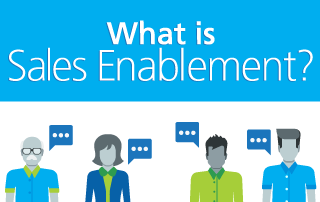sales-enablement
12 Sales Enablement KPIs: How to Measure Success
Sales enablement is critical to the success of any organization, yet it can be difficult to measure its impact. There are many factors to consider when determining the right sales enablement KPIs for your organization.
In this post, we’re collecting all the best KPIs for measuring your sales enablement success. Some of these may not be relevant to your business, but we invite you to steal and implement the ones that are.
Let’s get to it!
What are sales enablement KPIs?
Sales enablement KPIs are key performance indicators that help sales teams measure and improve their sales productivity.
If you’re familiar with sales KPIs, you’ll definitely notice some overlap with sales enablement KPIs. While both sales and sales enablement have the same ultimate goal (more revenue), sales enablement KPIs focus more on improving the day-to-day workflow and productivity of the sales rep.
Therefore, many sales enablement KPIs are “top line” metrics that have a trickle-down effect of helping revenue.
Why are sales enablement KPIs important?
Sales enablement KPIs are important because they help sales teams identify areas of improvement and track their progress over time.
By tracking sales enablement KPIs, sales teams can ensure that they are continuously improving their sales productivity and making the most of their sales enablement initiatives.
You’ve probably heard it quoted a million times on business blogs across the web, but it’s worth repeating: “what gets measured gets managed.”
Without some way of benchmarking your sales enablement success, there’s no way of knowing if any of your efforts are producing a positive ROI for the organization.
But don’t worry, we’ll help you cut through the confusion and vanity metrics and only track the things that actually make a difference.
How to measure sales enablement KPIs
There are a number of ways to measure sales enablement KPIs. Some common methods include:
- CRM reporting
- Sales Enablement software
- Internal surveys
- Customer feedback
Examples of Sales Enablement KPIs
1. Sales productivity
Aside from revenue, sales productivity is probably the most important sales KPI. After all, sales enablement is all about making sales teams more productive and efficient.
There are a number of ways to measure sales productivity, but common metrics include things like the number of sales calls made per day, the number of emails sent, or the amount of time spent on each sales opportunity.
Platforms like Accent Manage offer sales leaders comprehensive sales rep visibility and insight.
Managers and leaders get a complete picture of how deals are progressing as well as how reps and teams are performing. Engagement timelines and rep scorecards give managers and leaders clear visibility and insight into sales performance.
2. Customer acquisition cost (CAC)
Another key sales enablement KPI is customer acquisition costs. This metric measures how much it costs your company to acquire a new customer, and it’s important to track because it can help you determine whether or not your sales enablement efforts are paying off.
There are a number of ways to calculate customer acquisition costs, but a common formula is to divide your sales and marketing expenses by the number of new customers acquired over a given time period.

3. Churn rate
Churn rate is a sales enablement KPI that measures the percentage of customers that cancel or do not renew their subscription to your product or service. This metric is important to track because it can help you determine whether or not your sales team is successfully retaining customers.
There are a number of ways to calculate churn rate, but a common formula is to divide the number of customers who cancel their subscription by the total number of customers at the beginning of the period.
A high churn rate often means the customer wasn’t fully adopted into your product or service, or that they weren’t adequately qualified (which is something you can improve in your sales processes).
4. Customer Lifetime Value (LTV)
Another sales enablement KPI that’s closely related to churn rate is customer lifetime value (LTV). This metric measures the total value of a customer over the course of their relationship with your company.
This metric is important to track because it can help you determine whether or not your sales team is successfully acquiring and retaining high-value customers.
There are a number of ways to calculate customer lifetime value, but a common formula is to multiply the average purchase value by the average number of purchases over the lifetime of a customer.
5. How LTV, CAC, and churn rate work together
If you only track three metrics as part of your sales enablement strategy (of course, we’d recommend more), you should track LTV, CAC, and churn rate.
These three KPIs are like the Holy Trinity of sales metrics. They affect each other significantly and they’re also a great at-a-glance look at the health of your organization.
For example, how much it costs to acquire your customers will determine how much you need to make from them to break even (that’s their lifetime value).
However, if your churn rate is high, customers aren’t sticking around (which will tank their lifetime value to your organization).
Understanding these metrics intimately will give you a clear roadmap of what to improve in your organization. Understanding these in tandem with the other KPIs on this list will lead to even more business intelligence and success.
6. Lead conversion rates
Lead conversion rates are another important sales enablement KPI. This measures the percentage of leads that are converted into sales, and it’s a good way to track whether or not your sales team is effectively following up on leads.
There are a number of factors that can affect lead conversion rates, so it’s important to track this KPI over time to see if there are any trends.
If you have a multi-step funnel, you can also track more granular conversions from one section of the funnel to the next, as well as lead to customer conversion as a whole.
7. Sales cycle length
The sales cycle length is the amount of time that it takes to close a sale, and it’s an important sales enablement KPI because it can help you determine how effective your sales team is at moving prospects through the sales process.
There are a number of ways to measure sales cycle length, but a common metric is the number of days that it takes to close a sale.
You’ll soon see how all of these KPIs inform one another. For example, improving how well your reps qualify and engage prospects (sales productivity) will also improve your lead conversion rates as well as lower your sales cycle length.
8. Win rate
The win rate is the percentage of sales opportunities that are won, and it’s an important sales enablement KPI because it can help you determine how effective your sales team is at closing deals.
There are a number of factors that can affect win rates, so it’s important to track this KPI over time to see if there are any trends.
For example, you may find that customers in a particular demographic have a very low win rate, perhaps signaling that you need to lower prices or change your tactics for that market.
Or, you may find that particular reps have low win rates, which may necessitate further coaching and training.
9. Customer satisfaction
Customer satisfaction is another important sales enablement KPI. This measures how satisfied your customers are with your product or service, and it’s important to track because it can help you determine whether or not your sales team is effectively meeting customer needs.
There are a number of ways to measure customer satisfaction, but common metrics include things like customer surveys or Net Promoter Scores.
10. Sales and marketing alignment
Marketing and sales teams can’t afford not to cooperate. In fact, one of the most significant duties of a sales enablement manager or team is to facilitate good collaboration between sales and marketing teams.
But how do you measure cooperation between departments? It’s tough to slap a number on that.
Some common indicators of sales and marketing alignment are the percentage of leads that are followed up on by sales, or the number of sales and marketing cross-functional meetings.
11. Content efficacy
Content efficacy measures how effective your sales team is at using sales enablement content, and how well that content does its job of leading prospects down the funnel.
Platforms like Accent Connect will not only store and intelligently recommend content in selling contexts but also measure prospects’ responses to that content.
This will help you understand if the content you’re making (or how your reps are framing it) actually resonates with your target audience.
12. Training completion rate
Training completion rate is a sales enablement KPI that measures how well your sales reps are completing the training and onboarding process. It’s important to track because it can help you determine whether or not your sales team is prepared to sell, and it can also help you identify any areas where reps may be struggling.
There are a number of ways to measure training completion rate, but a common metric is the percentage of sales reps who complete all required training within a certain timeframe.
By tracking these KPIs, you can get a better understanding of how your sales enablement efforts are paying off, and you can make sure that your sales team is set up for success.
Write about more sales enablement KPIs to help sales teams measure their success.
Frequently Asked Questions about Sales Enablement
What is a sales enablement framework?
A sales enablement framework is a set of guidelines and best practices that sales teams can use to improve their sales productivity.
Sales enablement frameworks typically cover topics such as sales process, sales methodology, sales training, and sales tools.
Why is a sales enablement framework important?
A sales enablement framework is important because it provides sales teams with a structured approach to sales enablement.
Without a sales enablement framework, sales teams may struggle to implement sales enablement initiatives effectively and see the desired results.
What are some common sales enablement tools?
There are many different sales enablement tools that can be used to improve sales productivity. Some of the most common sales enablement tools include sales process management software, sales training platforms, and sales intelligence tools.
Accent Technologies offers a full suite of sales enablement software for any use case, including content management, sales leadership, and AI-powered analytics.
Click here for more information on Accent’s suite of software.
How can sales enablement tools help sales teams?
Sales enablement tools can help sales teams in many different ways. For example, sales process management software can help sales teams streamline their sales processes, while sales training platforms can help sales teams improve their sales skills.
Sales intelligence tools can also help sales teams by providing them with insights into their sales data.
What are some best practices for sales enablement?
There are many different best practices for sales enablement, but some of the most important include:
- Defining clear goals and objectives for sales enablement initiatives
- Creating a sales enablement plan that aligns with business goals
- Selecting the right sales enablement tools for your needs
- Implementing sales enablement initiatives effectively
- Measuring and tracking sales enablement KPIs to ensure success
Final thoughts
Sales enablement is a critical function for sales teams, and there are many things that sales teams should be doing to ensure sales enablement success.
By tracking the right sales enablement KPIs, sales teams can identify areas of improvement and ensure that they are making the most of their sales enablement initiatives.
In addition, sales teams should create a sales enablement plan that aligns with business goals, and select the right sales enablement tools for their needs.
Finally, sales teams should implement sales enablement initiatives effectively and measure their success against sales enablement KPIs.
By following these best practices, sales teams can maximize their sales productivity and achieve sales enablement success.
Next Steps
Accent Technologies is the first and only SaaS company to bring together SALES AI and CONTENT MANAGEMENT in a true REVENUE ENABLEMENT PLATFORM. We provide both sales and marketing with better visibility into the performance of their teams.
This drives revenue through intelligent recommendations for complex sales scenarios and provides the data for rich analytics that power better coaching, forecasting, and long-term customer support. Learn more about our solutions or REQUEST A LIVE DEMO to see it in action.











